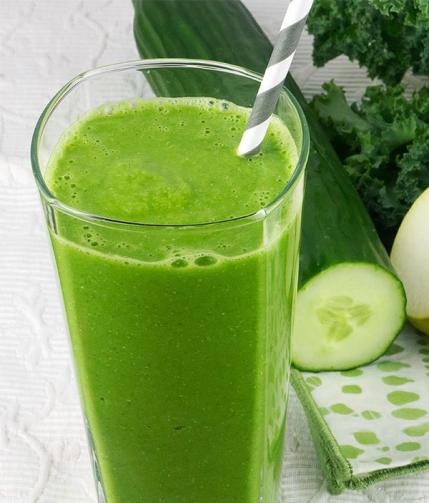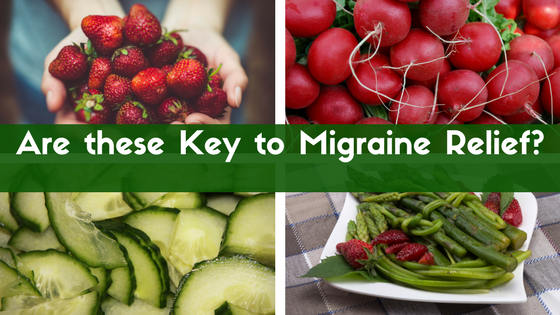I hope you have had a good week and especially that your week has been free of migraines. Every day when you don’t have a migraine is an added bonus, right?
In this blog, we are going to dive into some key foods that could be of great benefit to you for migraine prevention.
According to the Migraine Research Foundation, migraines are now the third most common global illness, and astonishingly, are the reason behind more than 1.2 million emergency room admissions just in the U.S. each year. Research suggests there may be a genetic component to migraines — which for most migraine sufferers, we feel we have already figured that out!
However, there are steps you can take to reduce the severity, frequency, and duration of migraines, no matter the cause.
Although you cannot change your genes, you can start reducing triggers. Dehydration is a common migraine trigger.
I was unaware of that for many years, but once I became aware of this, it changed my thinking regarding not just drinking water, but also the types of foods I consume. Sometimes trying to drink eight glasses of water a day can feel overwhelming — even for the most health-conscious! While you may know the benefits of drinking enough water — such as keeping your kidneys functioning properly, to improving the health, tone, and texture of your skin — with the busy schedules most of us keep, often it seems so difficult to keep up the fluid intake all the time. However, the good news is that there are lots of foods that can be hydrating, so why not take advantage of those foods so that you can become even more hydrated!
This week I am going to share the top 18 most hydrating foods for you to try so you can hydrate naturally.
Lettuce
When using lettuce in salads, it is easy to think of it as little more than a base to the tastier toppings such as nuts, meats, cheese or even dressing. However, it definitely should not be downplayed when it comes to hydration. Lettuce contains about 96 percent water, with iceberg being the “wateriest” of the bunch. While darker greens are more nutrient-dense and fiber-rich options, no matter what color lettuce you choose, you’ll also be getting plenty of bone health-promoting calcium and metabolism-revving chloride.
Cucumber
By adding some cucumber to your meals, you can most certainly increase your hydration and have a happy body in no time! Cucumbers are 96 percent water as well as being extremely low in calories. This makes cucumbers a great way to “fill up” without “filling out” your waistline.
Radishes
Radishes are more than just a garnish and are often overlook when it comes to a great addition to a salad. They are also a great way to hydrate. Made up of 95 percent water, radishes are also loaded with bone health-promoting calcium and may even help maintain healthy blood sugar levels. Research performed at the Tokyo University of Agriculture revealed that radish sprouts were effective at lowering blood sugar levels in rats with artificially-induced diabetes. As a migraine sufferer, you probably know that stable blood sugar levels are vital as it relates to migraine triggers.
Celery
Delicious, crunchy, low in calories, and a great side-kick to anything from hummus to peanut butter, celery is a must-have addition on any menu. If you want to increase your hydration, celery is a great addition to your healthy eating regimen. Celery is 95 percent water plus it contains metabolism-boosting chloride.
Tomatoes
The tomato can be thought of as a “lean, mean, hydrating machine!” These flavorful fruits are 94 percent water. Tomatoes are also loaded with vitamin C. Make sure you read your labels carefully before you opt for tomato-based sauces — many of those you find on the grocery shelf at your local grocery store are loaded with added sugar.
Strawberries
Strawberries are as hydrating as they are delicious. Boasting a 92 percent water content, strawberries are also low on the glycemic index plus being loaded with resveratrol — which can help you reduce belly fat and improve your cardiovascular health. Resveratol is known for its anti-aging and anti-cancer effects, plus it protects your brain and cognitive functions, may help prevent diabetes and has benefits for those with diabetes or pre-diabetes. So you must agree strawberries are more than just delicious, they are loaded with lots of health benefits as well.
Watermelon
I’m sure it comes as no surprise that watermelon is an easy way to effectively hydrate. In fact, this delicious, low-calorie fruit is over 92 percent water. Not only that, but it is also loaded with cramp-fighting potassium, energizing B6, and immune system-boosting vitamin C. Wow! Did you even realize there were so many healthy benefits to watermelon?
Zucchini
Some people use zucchini to make bread, while others may use it for oven fries, or spiralizing it into noodles. However you choose to eat it, zucchini is a satisfying way to stay hydrated plus increase your antioxidant intake. Zucchini is more than 95 percent water, while packing plenty of fiber, potassium, and vitamins A, C, and B6.
Cranberries
Cranberries may be well-known for their antimicrobial properties — an agent that kills micro-organisms or stops their growth — but did you know that they’re also a great way to hydrate? All that time spent in the bog makes cranberries seriously water-saturated! Water makes up 95 percent of their total mass! Also, cranberries are an excellent source of potassium and vitamin C — yet another one that boosts your immune system and muscle-building capacity.
Spinach
Of course, spinach is well-known as being a base to your salad, a great addition to a green smoothie, a healthy addition to your sandwich, and a great addition to your morning eggs. However you decide to eat it, when you choose spinach, you’re most definitely getting a healthier and more hydrating option. Spinach is not only 92 percent water, it’s also a great source of iron — which can improve your body’s protein-metabolizing capability and fight anemia-induced fatigue — it’s also another immune-boosting food rich in vitamins A and C, calcium for healthy bones, and blood pressure-regulating magnesium.
Cauliflower
I personally love cauliflower, and it seems to have become something of a “hot commodity” lately, due in part to the popularity of gluten-free and low-carb eating patterns. If you could use more hydration, then give this vegetable a chance. The grocery stores are full of fresh and frozen cauliflower rice and pizza! This crunchy cruciferous vegetable is 92 percent water. It is also loaded with potassium, which as you may know is an electrolyte that’s essential for preventing dehydration.
Eggplant
If you need to increase your electrolyte levels, this is a great water-rich option. It is also a great substitute for meat if you are a vegetarian or if you are following a heart-healthy diet. Eggplant is 92 percent water, making it a perfect choice for some extra hydration. Eggplant’s benefits don’t end there — it is full of fiber and vitamin C, is an easy way to keep your digestive system in check as well as kicking your immune system into high gear.
Asparagus
You can not only keep your diet high in antioxidants with this vegetable, but you can also increase your hydration by making asparagus a regular part of your meals. Asparagus is incredibly low in calories — just 3 per spear — plus it’s 92 percent water. Other benefits include being loaded with vitamins A, C, potassium, and iron.
Broccoli
By adding broccoli on a routine basis, it’s an easy way to instantly make your diet more hydrating. In addition to being 91 percent water, broccoli is also a rich source of both fiber and vitamin C, which makes it a huge benefit when it comes to your digestive and immune health.
Papaya
This delicious tropical fruit is not only an easy way to stay hydrated but can also satisfy your sweet tooth and help you stick to your weight loss regimen. Papayas are over 91 percent water. In addition,it is loaded with satisfying fiber, heart-healthy potassium, magnesium and immune system-boosting vitamins A and C. Wait, there’s more….. research was published in BMC Complementary and Alternative Medicine that revealed that papaya lowered blood sugar and improved antioxidant levels in diabetic rats. Again, another blood sugar stabilizing food that helps with the prevention of migraine triggers.
Grapefruit
Not only is this the perfect morning pick-me-up, but grapefruit is also a great hydrating way to start your day. Grapefruit is 91 percent water. It is also rich in vitamin C and fiber content which, again, can help keep your immune system healthy. Also, if you are one of the many weight-conscious people, grapefruit is a great choice. Research conducted at the Scripps Clinic showed that eating half a grapefruit before meals over a 12-week period resulted in significant weight loss for study participants.
Green Beans
While you can’t count on the healthiness of all green bean recipes (yep, like green bean casserole), these low calorie green vegetables are pretty great on their own, especially when it comes to hydration. With a 90 percent water content, plenty of fiber, potassium, B6, and vitamin C, green beans can help you prevent dehydration, improve your energy levels, bone health, and immune system. That a pretty healthy punch for such a little bean.
Cantaloupe
Why not start your day with a slice of cantaloupe and a glass of water and you’ll be really well-hydrated way before arriving at the office. Cantaloupe is 90 percent water and is loaded with oodles of beta-carotene and potassium. With this fruit you’ll be able to keep your electrolytes stable while reducing your risk of dehydration.
I know I have spoken often about the effects of dehydration on migraines. Dehydration is often an overlooked migraine trigger. Since dehydration also causes us to lose electrolytes, eating the right foods or drinking some electrolyte-infused water can definitely be beneficial. Some of these foods mentioned above can actually help prevent migraines since water is actually a nutrient, essential for your body’s proper functioning, and dehydration is a common migraine trigger. As migraine sufferers, we need to stay vigilant about the amount of fluid we drink, and we should aim to pre-empt thirst.
P.S. I am opening up my 4 Week Migraine Solutions Academy again. I have had great success with my beta testers and now would like to open up the Migraine Solutions Program to more of you. If you are on the fence about investing in this, let me assure you that this is a low-priced program that delivers lots of value. You will find yourself with fewer migraines and less intensity if you continually add these simple solutions to your lifestyle. With this low price, what do you truly have to lose? >>YES, I’M IN<<
Migraine-Busting Smoothie
(taken from my book, “Conquering Migraines:
Your Guide to Life Without Pain“)

Ingredients
½ pineapple
Handful of kale
1 stick of celery
1 lemon – juice only
½ cucumber
1 inch ginger root (fresh)
Directions
Throw all ingredients into a heavy duty blender, NutriBullet or Ninja and mix together. If preferred, add ice. Enjoy!


